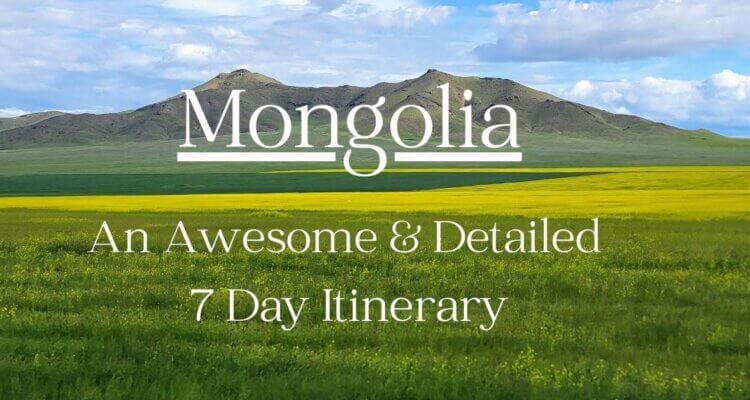Mongolia travel is something extraordinary and nothing like we had experienced in the past. This place is other worldly and Mongolia is a fascinating country. It is home to some of the most unspoiled wilderness in the world, a nomadic culture and people, as well as an incredibly rich history!
Did you know that the Mongolian Empire was the largest contiguous empire in the history of the world? It is often identified as the “Mongol World Empire” because in the 13th century it spanned much of Eurasia.
It is the world’s second largest landlocked country (locked between Russia and China). And the most sparsely populated one in the world! There are only 3.3 million people here and half live in the capital, Ulanbaatar. The terrain here is mostly desert and steppe (a dry grassy plain), with mountains to the north and west.

Mongolia trips are filled with a wide variety of wildlife including wild camels, and takhi or Przewalski’s horses (Mongolian wild horses). If you are super lucky on your Mongolia itinerary you may see a snow leopards – however, they are incredibly rare. In addition, Mongolia’s livestock per capita is among the highest in the world. There are over 67 million cows, sheep, goats, camels and horses here making the green yellow landscape very lively and fun to watch.
During our 7 day stay,our Mongolia travel covered much of Central Mongolia’s amazing highlights including: Terelj National Park, the ancient capital of Kharkhorin, the mini Gobi, Hustai National Park and Ulanbaatar. In this post we will share all the details and the logistics of our trip, as these were hard to find when we were planning our adventure here.
Logistics – Mongolia Travel
On Arrival – SIM card and ATM
Although many places in Mongolia take credit cards, there are quite a few Ger camps, museums and restaurants that do not. In addition, ATMs did not always work with our western debit/credit cards. Therefore taking out some cash at the airport ATM is recommended.
Furthermore, none of the eSims that we tried worked in the country. The airport has quite a few options for SIM cards. We got 15 gb for 1 week for $5 USD. We didn’t have data in all of the remote places that we visited, but in most of them.
Getting Around Mongolia – Details with Costs
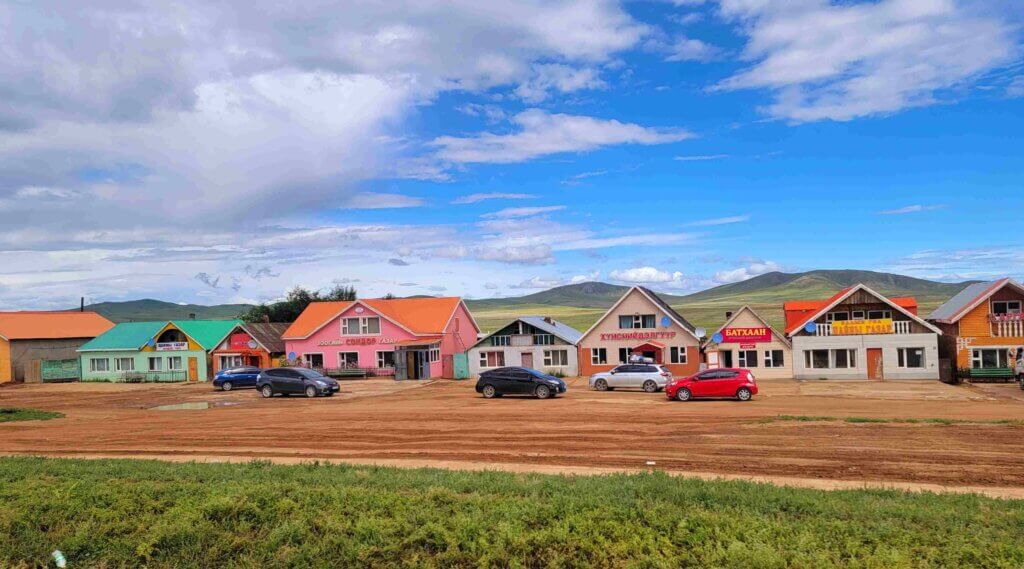
Mongolia travel from one attraction to the next is no easy task. When we looked, car rentals were $159 USD plus per day. And trying to find a car and driver was even worse. In addition, the roads are not great and do require a 4X4, which are even harder to find.
I turned to a Mongolia Travel Community Facebook page and was very lucky to find a guide/driver through them.
Our cost in USD was $40 /day (for our guide and 4X4 car) + fuel (for all 7 days it was $135) + $35 (for 2 nights of our guide’s accommodations). We also covered lunches for our guide when we were eating together ($15). In addition, we tipped our guide, but that is an individual decision.
Food – Supermarkets
There are fantastic restaurant options in Ulaanbaatar- we list them below. However, outside of the capital, food options are much more restricted. Especially if you have dietary restrictions like me.
Therefore we recommend picking up some basics at one of the supermarkets in town. There is a Carrefour as well as some bigger local supermarkets called Nomin which have locations all over Ulaanbaatar.
Guide Contact Information
Our guide’s name is LV (Lkhagvadorj Vanchin) and he is one of the kindest and most trustworthy guides we have ever encountered. His What’s App is: +976 889 77487
7 Day Central Mongolia Itinerary
Below is a perfect 1 week Mongolia itinerary for your Mongolia travel plans:
Day 1: Arrive in Ulaanbaatar, drive to Terelj National Park to see Turtle Rock and Aryabal Meditation Center and Buddhist Temple. Stay at Terelj Luxury Hotel.
Day 2: Enjoy Terelj National Park, hike, get a massage at the hotel, go for a horse back ride or just decompress. Stay at Terelj Luxury Hotel. An option for this day could be to compress the itinerary to a 6 day one.
Day 3: Drive from Terelj National Park to the Genghis Khan Equestrian Statue. Visit the statue and see eagles and camels. Drive to Ulaanbaatar and check in to Holiday Inn. Visit Zaisan Memorial and Gandan Buddhist Monastery.
Day 4: Drive to Kharkhorin to see the Erdene Zuu Monastery and the Kharkhorin Museum. Stay at Eden Tourist Camp in the mini Gobi.
Day 5: Enjoy the mini Gobi and visit a local family (part of Eden Tourist Camp itinerary). Drive to Hustai National Park and see the horses in the evening. Stay at Hustai National Park Camp.
Day 6: Wake up to see the wild horses again. Then drive back to Ulaanbaatar. Check in at Holiday Inn and walk to the Sukhbaatar Square. Watch the Tumen Ekh Ensemble performance.
Day 7: Fly back
Terelj National Park – Mongolia Tours
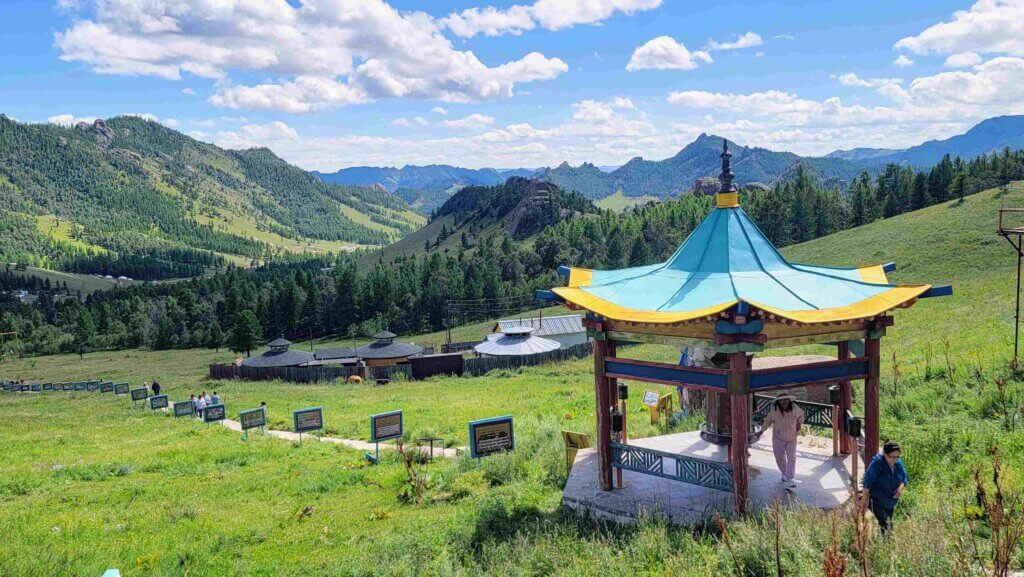
Terelj National Park is a must-visit for any nature lover traveling to Mongolia. Located just 65 kilometers (1- 1.5 hours on paved roads) northeast of Ulaanbaatar, the park is home to a stunning array of natural beauty, from towering granite mountains to wildflower meadows to fast-flowing rivers.
This park is a must on any Mongolia itinerary as there is so much to see and do here.
Turtle Rock

The park’s most iconic feature is its dramatic rock formations, which have been sculpted by wind and water over millions of years. One of the most famous rocks is Turtle Rock which looks like a giant turtle.
In addition, these rocks are home to a variety of plants and animals, including wild boar, red deer, roe deer, fox, eagles and wolves.
Aryabal Meditation Center – Buddhist Temple

The Aryabal Meditation Center is located just 1 km (20 – 30 minute walk or 5 minute drive) up the road from Turtle Rock. The temple was built between 1998 and 2004 on one of the most scenic hills in the park. Once we hiked up the steps, the views took our breath away. In addition, the energy at the top is quite peaceful yet powerful.
Just a bit further from the meditation center (about 20 meters) is a cave, which is worth visiting.
Accommodations – Terelj National Park
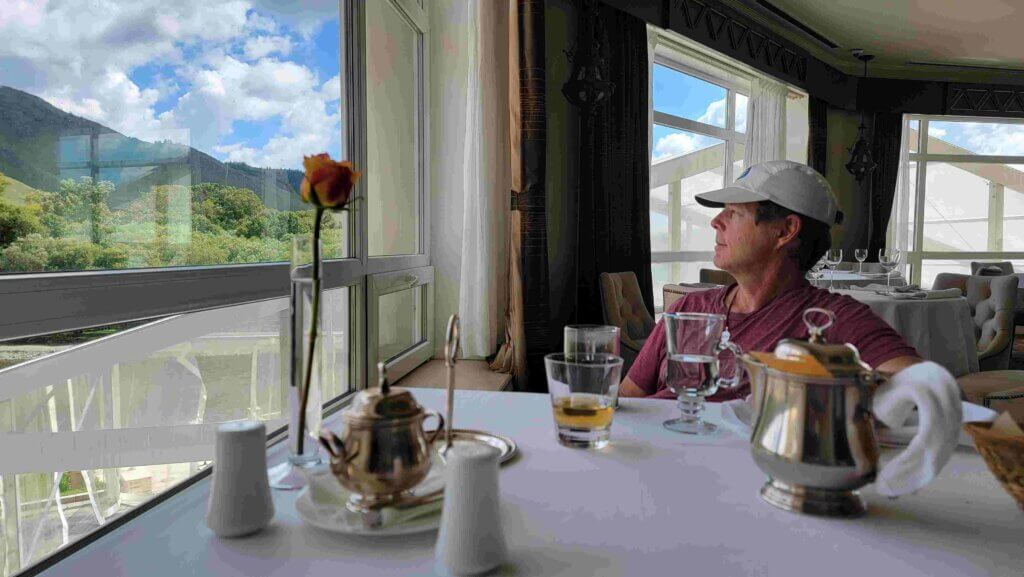
Within the park there are quite a few hotels as well as Ger camps. Gers are typical Mongolian white round dwellings. We highly recommend staying in a Ger at least once during your trip.
In Terelj National Park we splurged and used our 2 free Hyatt (category 1-4) certificates and spent 2 nights at the Terelj Luxury Hotel. We also ate at the hotel restaurant.
The nicest ger camp that we visited in this park is Terelj Lodge which has a variety of different ger types. They also prepare meals and there are hot showers and toilets on the premises (not all ger camps offer that). Please note that there is no wifi offered there.
Genghis Khan Equestrian Statue
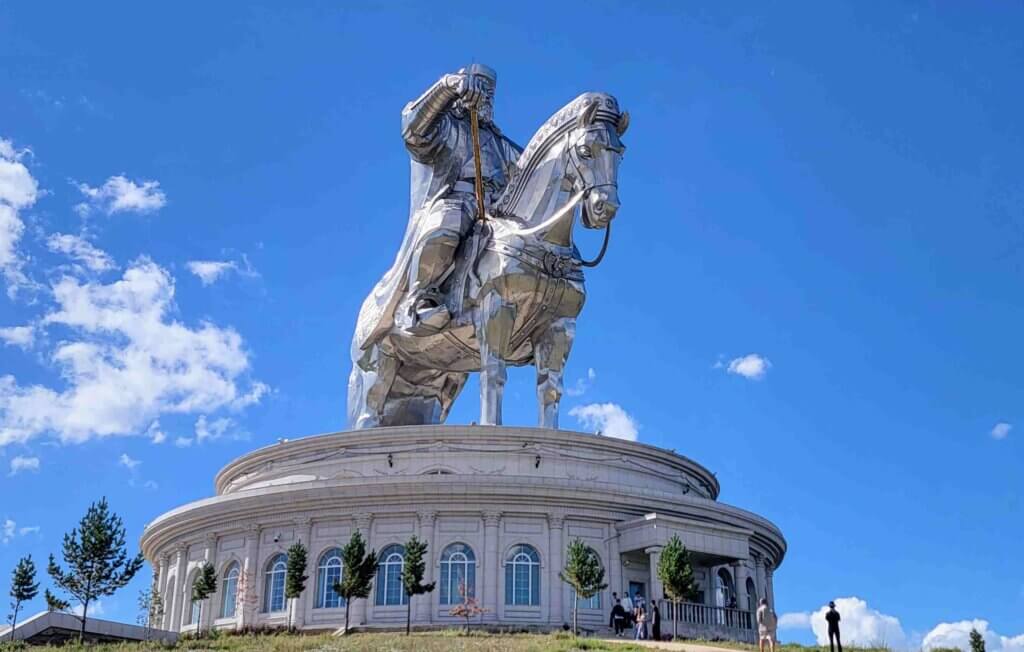
On our way back to Ulaanbaatar from Terelj National Park we drove to see the Genghis Khan statue. This stainless steel statue is 40 meters tall and is the biggest equestrian statue in the world. Visitors walk up the inside of the statue (or take the elevator) to stand inside the horses head and see some stunning views of the valleys.
This statue is part of most Mongolia tours due to it’s proximity to the capital and Terelj National Park. In addition, the attraction has eagles, camels and horses.
Ulaanbaatar
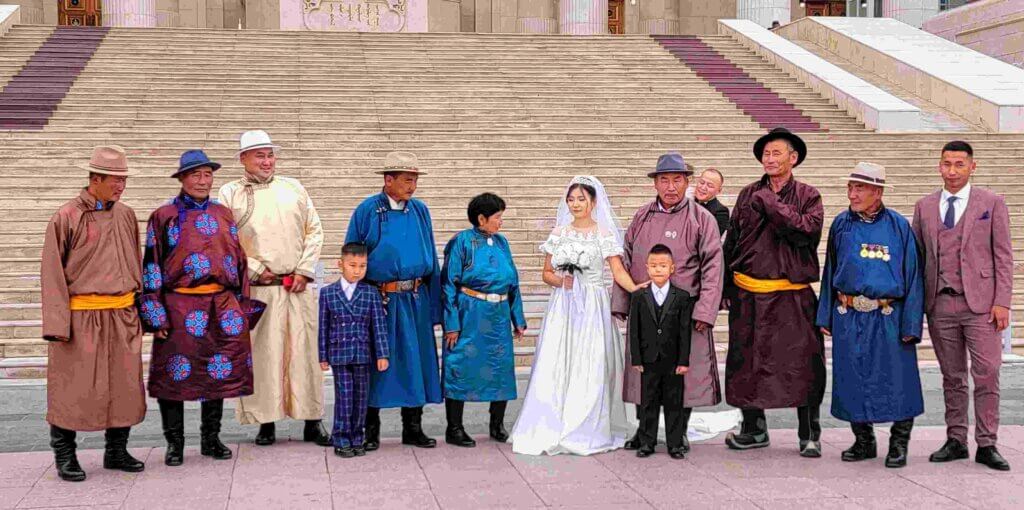
There are quite a few things to see and do in Ulaanbaatar for any Mongolia itinerary. Keep in mind that traffic in the city rivals that of Manila! We walked everywhere because sitting in traffic at 1 km per hour drove me insane!
These Mongolia travel activities we spread out between Day 3 and Day 6 of our 7 Day Central Mongolian itinerary.
Zaisan Memorial
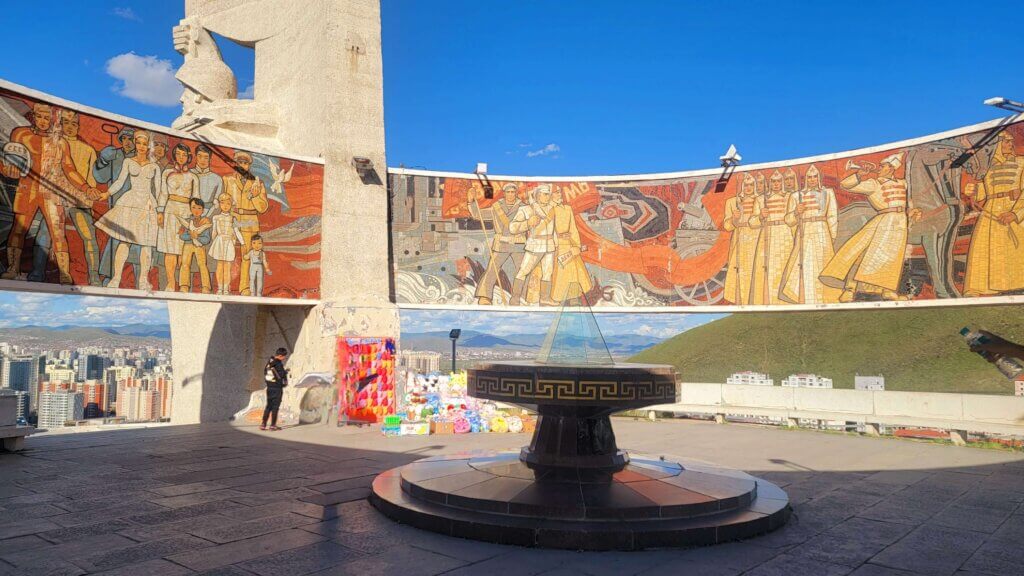
The Zaisan Memorial is a WW II monument on top of an Ulaanbaatar hill. The views from above are lovely of the valley and the city.
Gandan Monastery
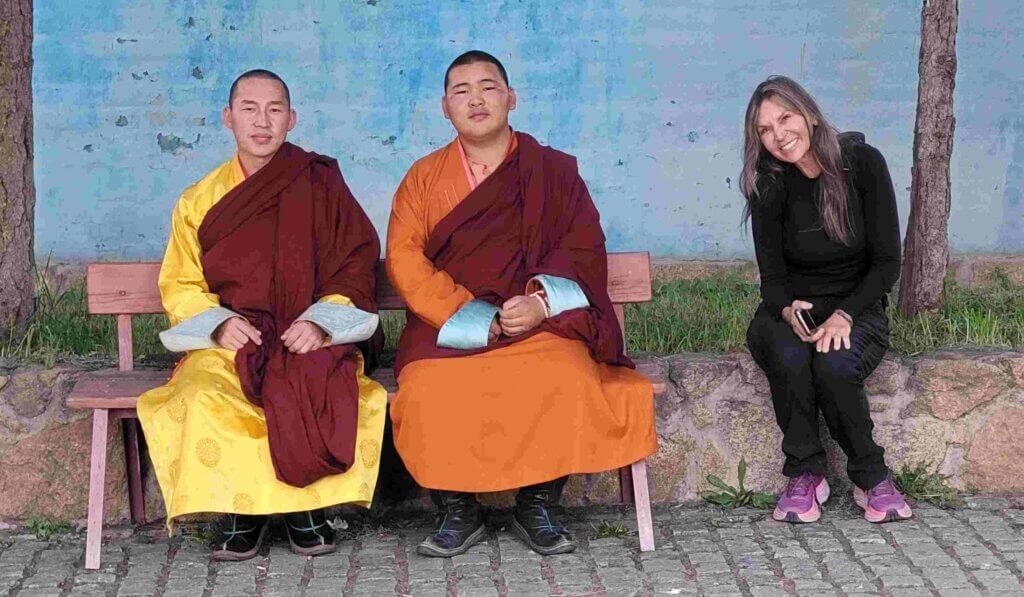
Gandan Monastery is the main religious center of Tantric Buddhism in Mongolia. It was built in 1809 and is a large complex with 10 different active temples inside. 900 lamas lives in the center and it is a lovely place to stroll around.
Throughout the facility there are prayer wheels to turn and statues to look at. The most important statue on the premises is the Megjid-Janraiseg. It is a copper 25 meters high rebuild of a 32 meter statue which was destroyed by the Soviets. There are prayer wheels all around it and it is a a very spiritual area for Buddhists.
Sükhbaatar Square
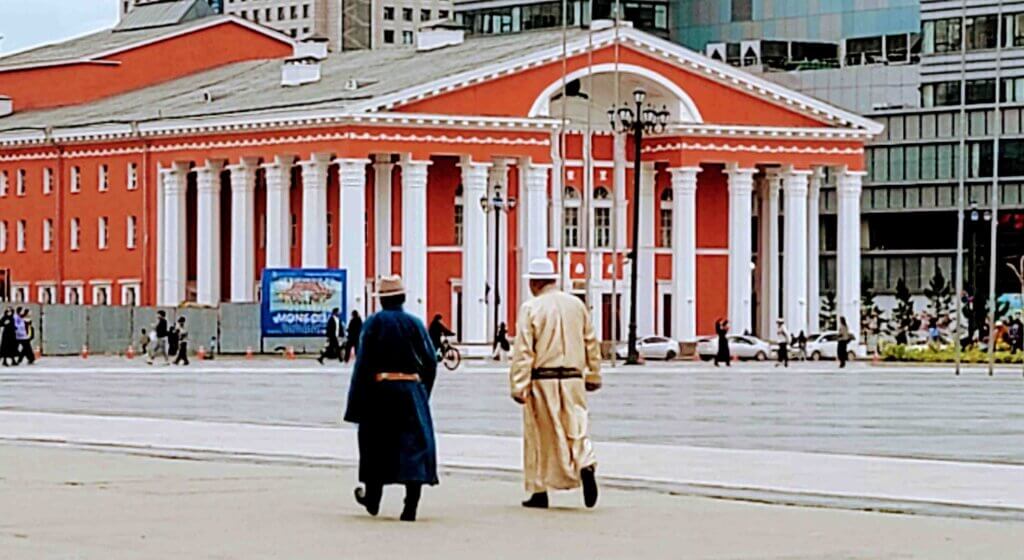
Sükhbaatar Square is a lively large square with colorful buildings around it. They include the Government Palace, the Post Office, the Stock Exchange, just to name a few.
Tumen Ekh Ensemble Show
Tumen Ekh is an ensemble performance of traditional Mongolian throat singers and dancers. There is a lot of pageantry and costumes and many people sight this as their favorite attraction in Ulaanbaatar.
The show is at 17:00 and tikets can be purchased in the main square of Sükhbaatar Square. We did not go as we preferred to roam the city in the evening.
Museums
There are many museums in Ulaanbaatar. The top 2 are the Chinggis Khaan Museum and the National Museum of Mongolia.
Accommodations in Ulaanbaatar
We stayed at the Holiday Inn Ulaanbaatar on our 3rd and 6th nights (on points). The hotel is modern and in a great location – next door to the Gandan Monastery (our room looked down on it) and about a 20 minute walk to Sukhbaatar Square and museums.
Restaurants in Ulaanbaatar
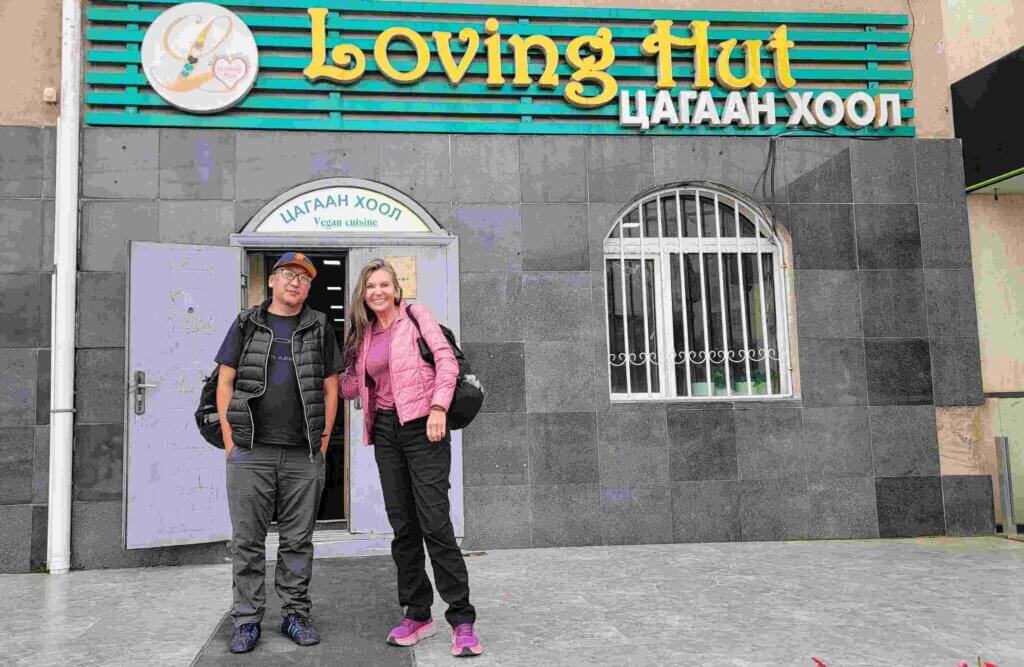
We could not believe our eyes when we saw the number of vegan restaurants in Ulaanbaatar! LV (our guide) told us that since the country is predominantly Buddhist, people like to eat vegan at least once per week.
There are 6 Loving Huts in the city, and the food is absolutely delicious and very inexpensive. The Loving Hut that was 8 minutes walk from the Holiday Inn had a really nice cafe vibe as well. This was a great way for me to try traditional Mongolian dishes in their vegan form! I even bought additional food to take with me.
There are 2 other well renowned vegan restaurants that even non vegans enjoy:
- Bosco Verde Vegan Italian Restaurant
- Agnista Cafe
And if you are not a vegan and want to try the #1 expat restaurant in Ulaanbaatar that everyone visits, then go to Rosewood Kitchen + Enoteca.
Kharkhorin
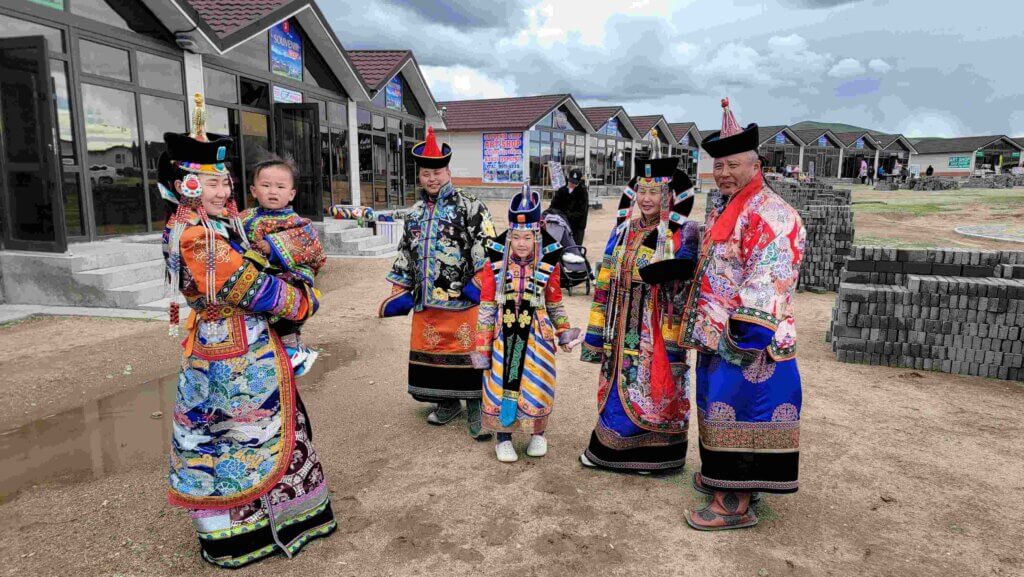
I have found at least 4 different ways that Kharkhorin is spelled! However you spell it, this was the capital of the huge Mongol Empire in the 13th century.
The 350 km drive from Ulaanbaatar is a must on any Mongolian itinerary. Not only because it is an insanely gorgeous route but also because of the deep history here.
Karakorum was once a thriving city located in the heart of the Mongol Empire. It was a place where cultures from all over the world came together to trade, learn, and grow.
The city was founded by Genghis Khan in the 13th century, and it quickly became a major trading hub. Merchants from all over Asia and Europe traveled to Karakorum to trade silk, spices, tea, ivory, cotton, wool, and precious metals.
In addition to being a major trading center, Karakorum was also a center of learning. The city was home to several universities and libraries, and it attracted scholars from all over the world.
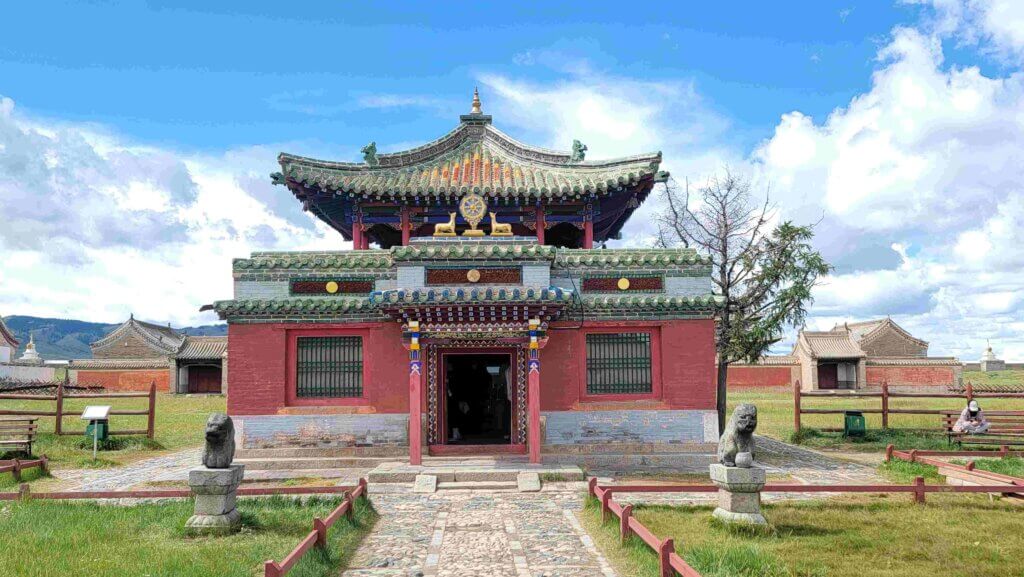
Karakorum was also a city of religious tolerance. The city was home to temples of different faiths, including Buddhist, Muslim, and Christian.
The city’s glory was short-lived, however. Kublai Khan moved the Mongol Empire’s capital to Beijing in the 13th century, and Karakorum was abandoned.
The Karakorum we see today is a shadow of its former self. The city is in ruins, but it is still a reminder of the city’s rich history and culture.
The Mongolian government is currently working to revitalize Karakorum. The government has pledged to restore the city’s ruins and to make it a tourist destination.
With the government’s help, Karakorum has the potential to become a thriving city once again. It could be a place where cultures from all over the world come together to learn, grow, and create.
Erdene Zhu Monastery
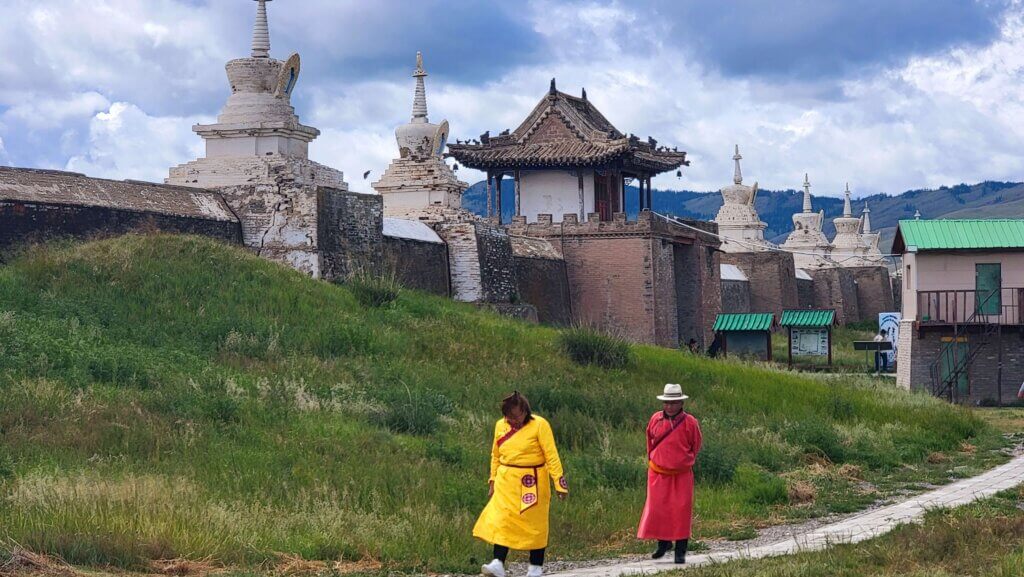
The Erden Zhu Monastery was built at a time when Karakorum was experiencing a great decline. The city had been abandoned by the Mongols in the 13th century, and it was slowly falling into ruin. However, the monastery helped to revive Kharkhorin and make it a center of Buddhist learning and culture.
The monastery was home to more than 100 temples at its peak, and it was the first Buddhist monastery in Mongolia. In addition, it was one of the largest monasteries in the world.
During the Soviet purges of the 1930s, many of the temples at Erdenet Zuu Monastery were destroyed. However, a few of the main temples were saved as “symbols of religious freedom”. The monastery complex was eventually converted into a museum.
After the fall of the Soviet Union, the monastery again became active. However, it is still a shadow of its former self. Today, only about 20 temples remain at Erdenet Zuu Monastery.

Despite its size, Erdenet Zhu Monastery is still one of Mongolia’s most sacred Buddhist temples. Buddhist-practicing Mongols vow to visit the complex at least once in their lives.
The Laviran Temple at the back of the complex is where monks can be found chanting, practicing musical instruments, and providing sacred readings daily.
The monastery is a reminder of the rich history and culture of Mongolia. It is a place where people can come to learn about Buddhism and to experience the beauty of Mongolian culture.
Kharkhorin Museum
The Kharkhorin Museum is small, but it has quite a bit of history about the Mongol Empire, Kharkhorin – the ancient capital as well as housing 3128 artifacts from days gone by.
There is a also a cute gift shop inside selling original t-shirts, gifts, postcards and stamps.
Accommodations in Kharkhorin
We chose to push on to the mini Gobi. However, if you choose to stay in Kharkhorin there are a few nice accommodations that you can consider:
- Ikh Khorum – one of the nicest hotels in Kharkhorin
- Anja Camp – for a ger experience as well as delicious healthy food
Mini Gobi -Elsen Tasarkhai
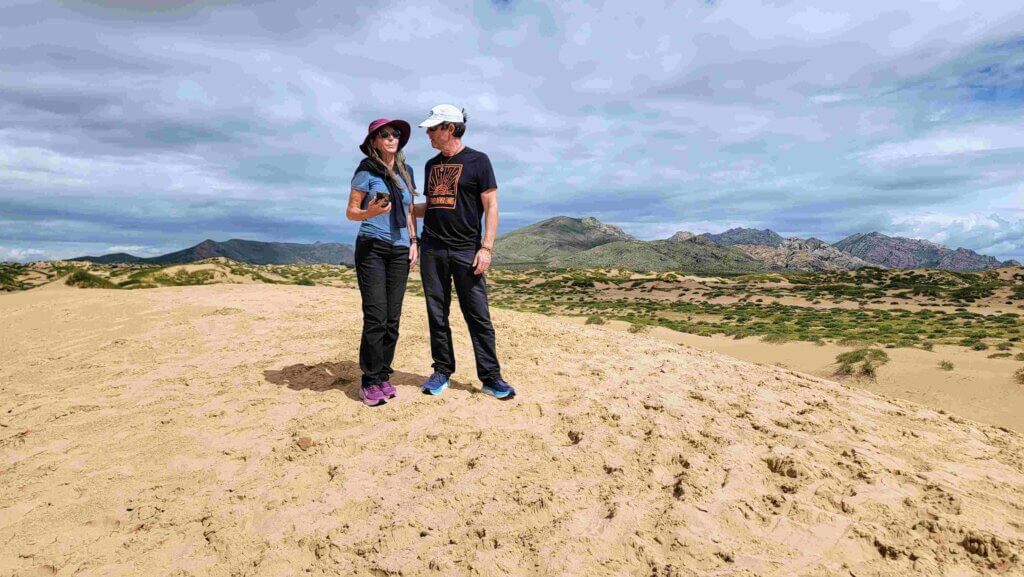
The Mini Gobi – Elsen Tasarkhai is a unique landscape located 78 km from Kharkhorin (about an hour of driving), or 285 km from Ulaanbaatar. Don’t let the distance fool you – it is 4.5 to 5.5 hours of driving from the capital. This was our night stop coming back from Kharkhorin.
The dune stretches for 80 kilometers and is 5 kilometers wide. It is a popular destination for tourists who want to experience the beauty of the Mongolian wilderness.
During a trip to Elsen Tasarkhai, you can visit the ruins of the Erdenekhamba monastery, which is located in the beautiful landscape of Hugnu Khan mountain (15.6 km from the main road). You can also visit a local nomadic family and learn about their traditional way of life.
The area is a great place to go hiking, camping, and stargazing. You can also go sandboarding or camel riding on the dunes.
Nomadic Family Visit
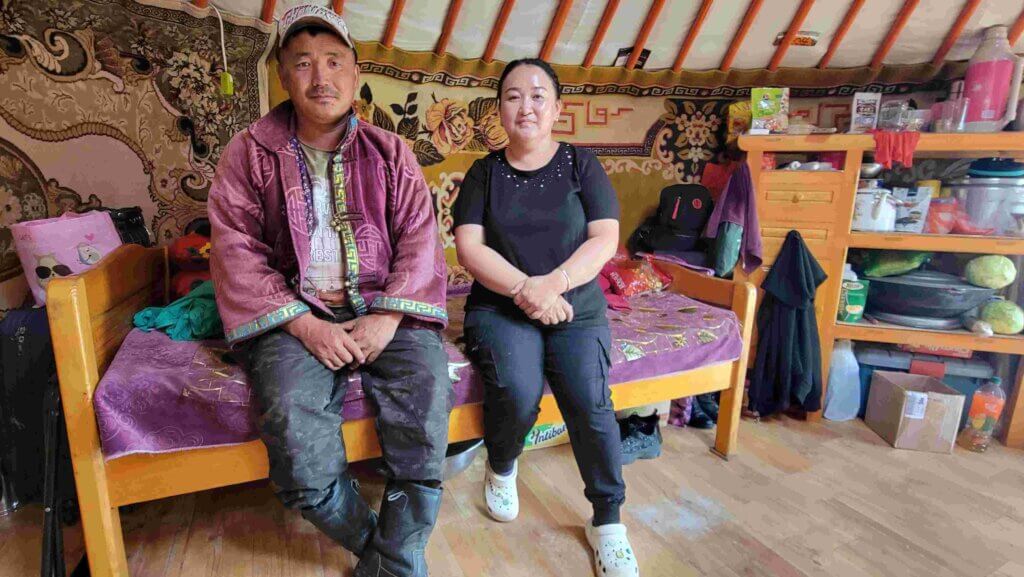
Our accommodation (Eden Tourist Camp) arranged for us to visit a local nomadic family that lives in the Mini Gobi park. Part of the visit is to bring something to the family – some food, drinks and maybe a little bit of money.
The family in turn will offer you some of their home made goods. We were offered some byaslag which is a mild, unripened Mongolian cheese prepared from the milk of yaks (it can also be prepared from cow milk).
The family that we were introduced to consisted of a couple with their small children and the wife’s parents. The elder of the family was a distinguished man with cataracts who did not see very well. He really liked my sunglasses and asked me to try them on. They made him see better, so I left them with him as well.
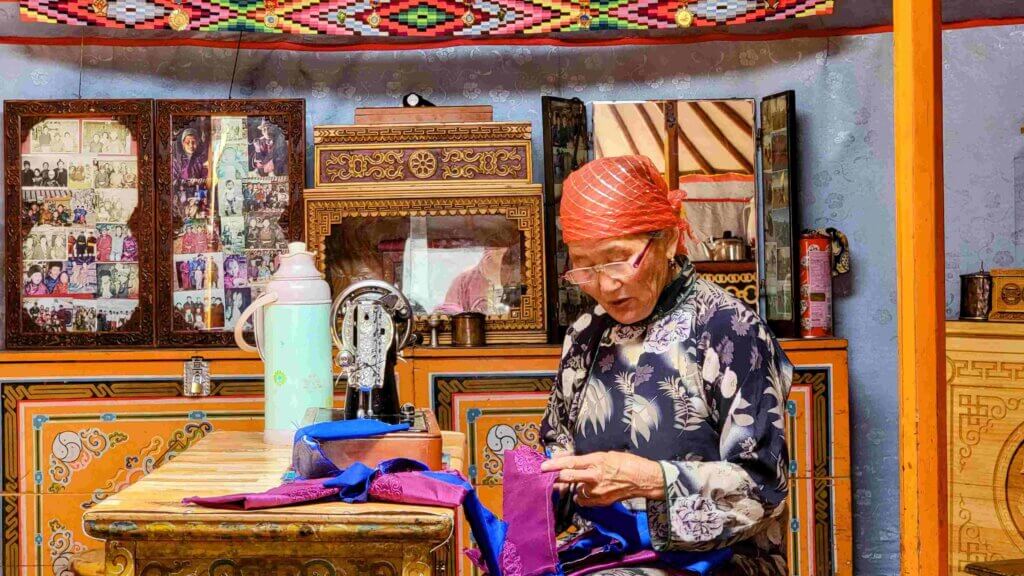
Rob got to ride around the desert on the husband’s motorcycle. And we watched the elder grandmother sew in one of the other gers. The family also has 2 gorgeous Bankhar dogs – the most popular livestock guarding dog breeds in Mongolia.
Accommodations In Mini Gobi
We decided to stay at the Eden Tourist Camp. It is about 10 km from the main road and is a bumpy yet pretty drive on a choppy dirt road. The camp is located in a protected area where rocks jut out from the nearby hills. There is a fresh water spring which comes down the mountains.
Eden Tourist Camp has small private wooden structures for lodging, a quaint main dining hall/living room for the owners and an outdoor structure for toilets and hot showers. Everything runs off of solar power as this is an eco-lodge. Please note that, there is no electricity, no wifi and data is very spotty. This place is cash only – we paid 315K tug for a little house for us, a t-pee for LV and breakfast for all 3 of us.
However the stars at night were breathtaking! The sunset that we saw was equally stunning. And the owners are kind, generous and lovely people which made this Mongolia itinerary very special.
Hustai National Park
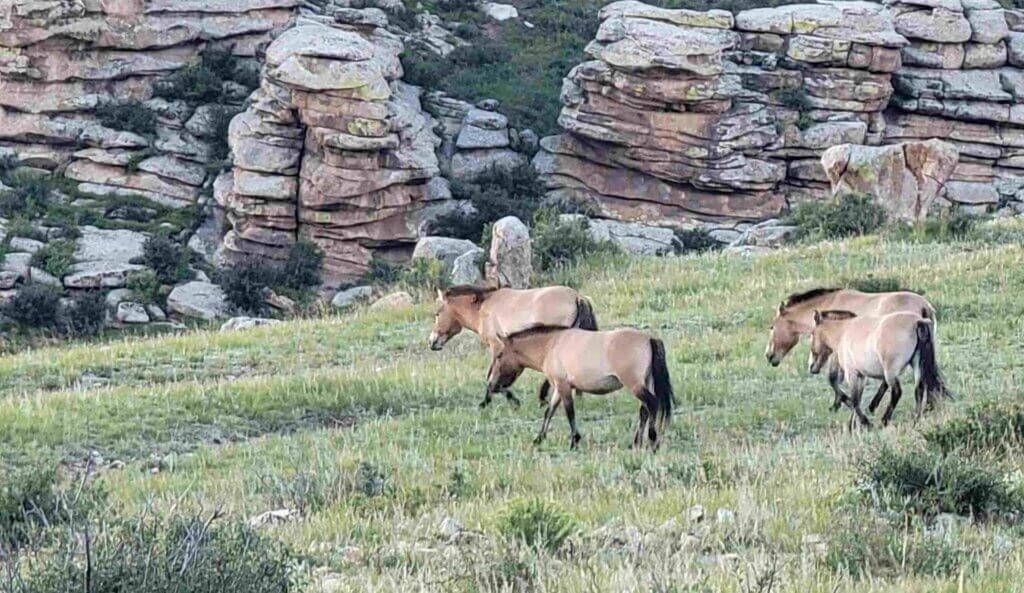
The Hustai National Park covers 506 square km of land. More than 50% of the land is mountain steppe. The Tuul River runs through the park, providing it’s many flaura and fauna inhabitants the water that they need to thrive.
The cost for the park entry was 35K tug per person. We did not have to pay for LV as he is a Mongolian.
Przewalski Horses
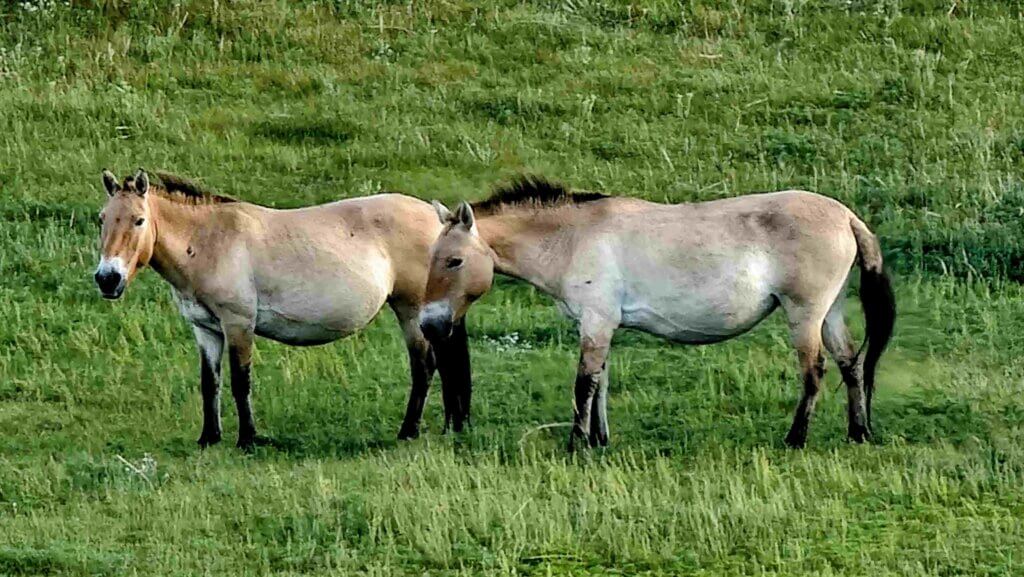
In the 1990’s the Takhi or (Przewalski) horse was re-introduced to the area. This horse is the last wild horse in the world. The Hustai National Park is again home to about 200 of these fully wild, exceptional and elusive creatures.
We arrived from the Mini Gobi in the late afternoon and immediately set out to see if we could find any of the Przewalski horses in the park. The best time to see them is either at dawn (5:00 – 7:00) or at dusk between 18:00 and 19:00.
Please keep in mind that the beginning of the park (where the ranger station is) is about a 30 minute drive on a bumpy dirt road from the main road. Then it is another 30 minutes to get into the area where you may start spotting the Przewalskis.
During our 1 hour drive through this UNESCO site/ park we were very lucky to see 6 separate families of these gorgeous creatures. They are very shy, so as soon as they hear a car or see a human they start bolting. Therefore, it is best to be as quiet as possible.
On our drive back to the ger, the sky started filling with stars and LV pointed out a fox running across the dirt trail. It was truly magical.
Accommodations In Hustai National Park

Hustai National Park also has a ger camp called Hustai Ger Camp which is at the entrance of the park (where the ranger station is). These are excellent accommodations with electricity and a fireplace/stove inside each ger. There are indoor facilities with hot showers and toilets and they provide towels.
In the evening as the air turns crisp the camp workers start filling up each ger’s fireplace/stove with wood and lighting them. Rob had some vodka to share with LV as we reflected on our busy and very interesting day together. After a few sips, LV returned to his own ger to rest up for the next day and enjoy his fireplace.
In the morning, the workers returned to make sure that our gers were nice and toasty. Some rain was falling on the mountains, but the sky was blue. A huge rainbow appeared in front of our ger. Another spectacular moment in Mongolia!
The cost for a ger for us was 180k tug and the cost that we paid for LV’s ger was 60K tug. Breakfast was a separate charge of 20K tug per person.
Wrap Up – Our Mongolia Itinarary
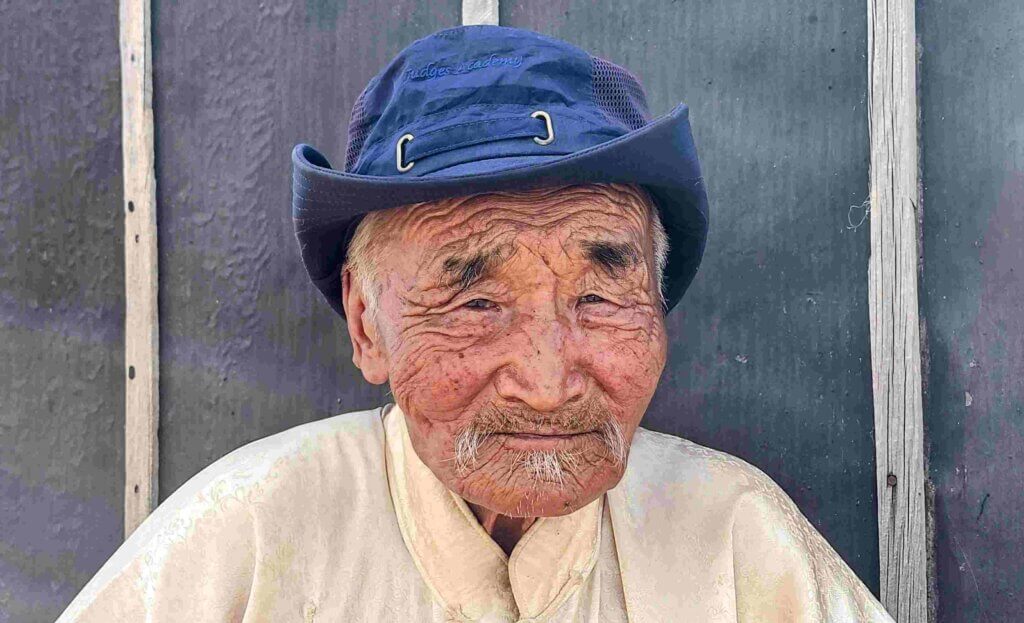
In my mind, Mongolia has always been this magical country filled with mountains, steppe and desert. I always dreamed of the eagles, camels and horses which live in this bare yet mystical land. I was not disappointed! In some ways we found Mongolia travel to be similar to Bhutan, but with a much cheaper price tag!
As we planned this Mongolia itinerary, it was difficult to find the necessary resources for guides/drivers, transportation, etc., Lucky we stumbled on the Mongolia Travel Community page on Facebook and found LV who made our trip seamless and very memorable.
Have you been on a Mongolia vacation? What was your experience here? Are you planning a trip there? We would love to answer any questions that you may have. Just leave them in the comments and we will get back to you as soon as we can.

